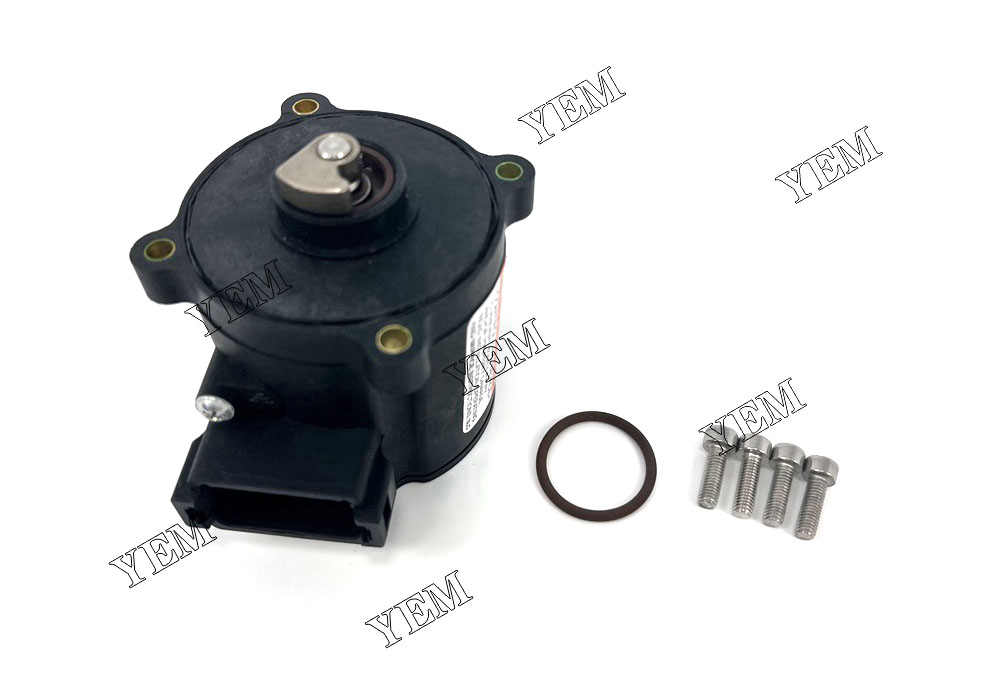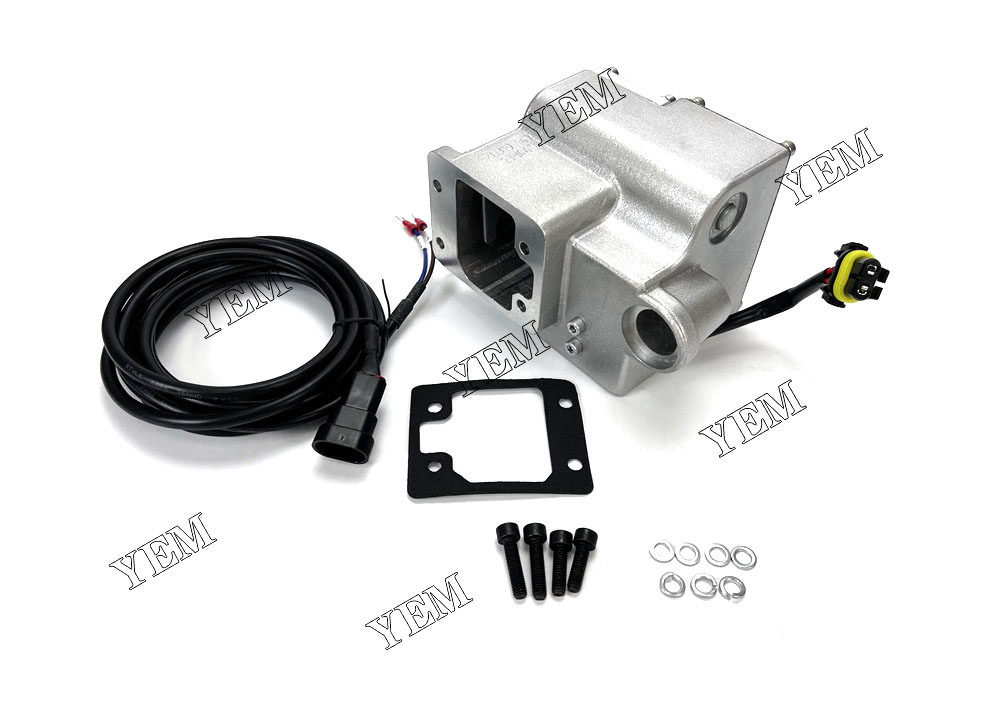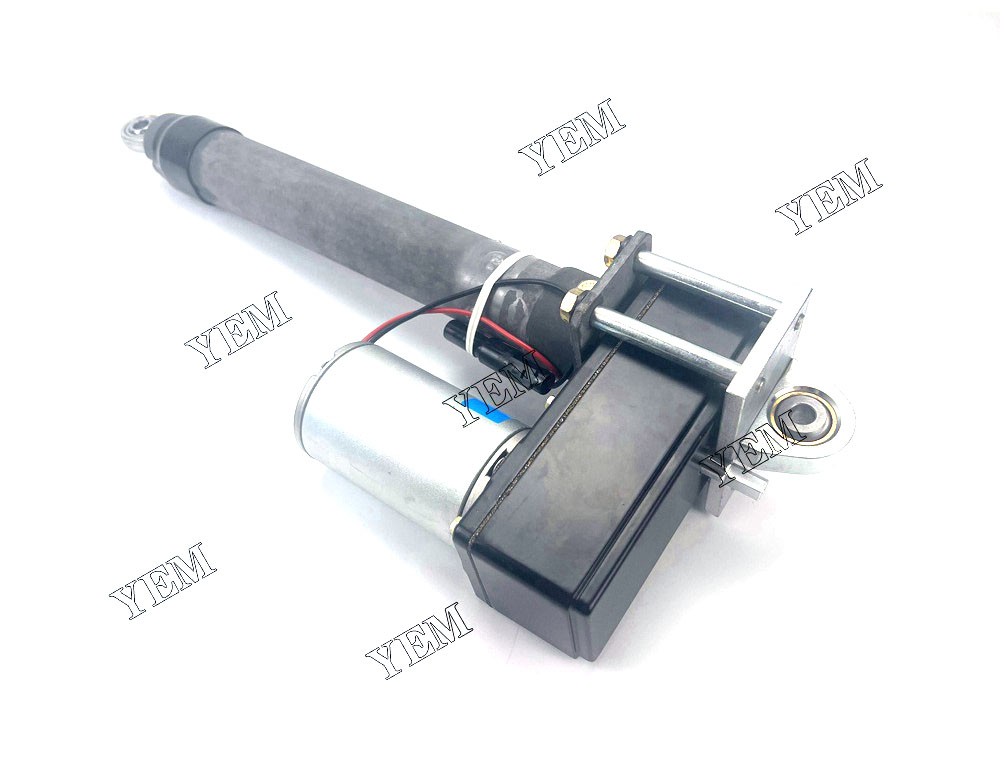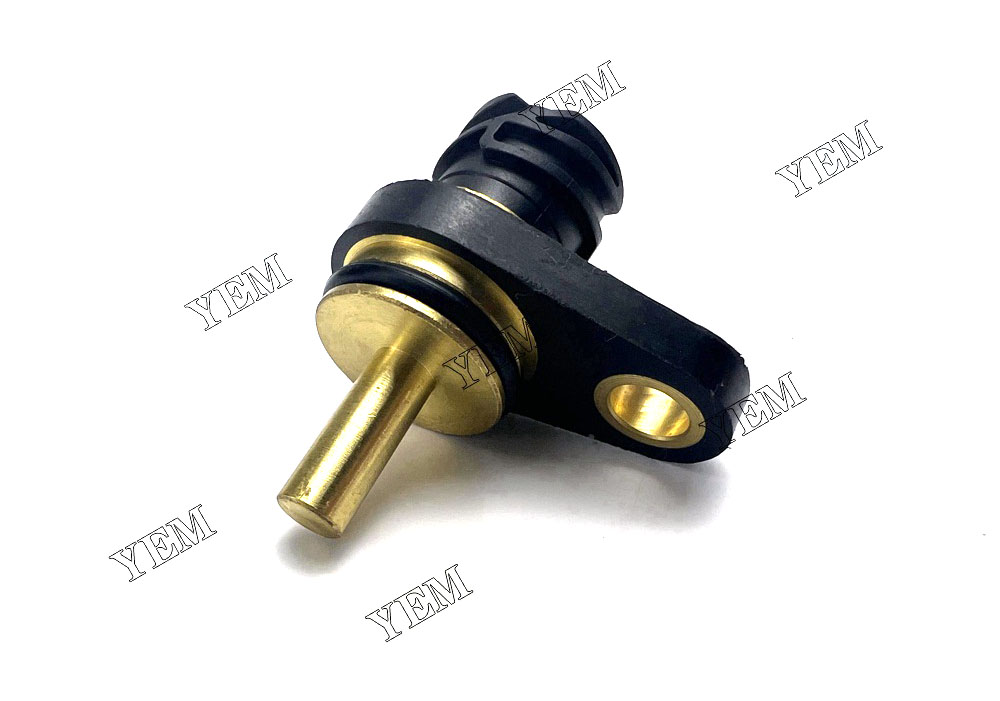What are the working principles and types of actuators?
The engine actuator is one of the key components of the engine control system. Its main function is to control and adjust the operating parameters of the engine according to the instructions of the control system to achieve more efficient, reliable and environmentally friendly engine operation. Engine actuators usually include three parts: sensors, actuators and control units.
The basic principles and working principles are as follows:
- Sensor: The work of the engine actuator firstly depends on the feedback signal of the sensor. Sensors monitor and measure various parameters of the engine, such as speed, temperature, pressure, etc. Sensors convert these parameters into electrical signals and send them to the control unit.
- Control unit: The control unit is the intelligent part of the engine actuator. It receives the signal from the sensor, calculates and generates control commands according to the preset operation mode and control strategy. The control unit usually uses a microprocessor or a dedicated chip to process and judge signals through software algorithms.
- Actuator: The actuator controls the operating parameters of the engine according to the instructions sent by the control unit. Common actuators include fuel injectors, air control valves, valve actuators, and more. The actuator will control the injection quantity of fuel, the intake quantity of air and the opening and closing of the valve according to the size and frequency of the instruction.
Through the cooperative work among sensors, control units and actuators, engine actuators can achieve precise control and adjustment of the engine. For example, when the sensor detects that the engine speed is too high, the control unit will reduce the fuel injection amount to reduce the engine load; when the sensor detects that the engine temperature is too high, the control unit will open the cooling system to reduce the temperature.

In short, the engine actuator realizes the precise control of the engine operating parameters through the feedback of the sensor and the instruction of the control unit, so as to ensure the efficiency, reliability and environmental protection of the engine.
Type of engine actuator
There are various types of engine actuators, which can be divided into the following categories according to their functions and positions in the engine system:
- Fuel system actuator: Control and adjust the fuel injection quantity and injection timing to achieve efficient fuel combustion. Common fuel system actuators include fuel injectors (fuel injectors), fuel injection pumps, fuel regulating valves, etc.
- Air control actuator: control and adjust the intake air volume to meet the needs of the engine under different working conditions, such as air valve actuator, throttle actuator, etc.
- Valve actuator: Control and adjust the opening and closing and opening timing of the valve to achieve accurate control of the intake and exhaust process. Common valve actuators include valve drive mechanisms (such as camshafts, rocker arms, etc.), valve bearings, and valve springs.
- Exhaust system actuator: Control and adjust the pressure and flow of the exhaust system to improve exhaust efficiency and reduce exhaust emissions. Common exhaust system actuators include turbochargers, exhaust gas recirculation valves, and more.
In addition to the above-mentioned actuators, there are other actuators with specific functions, such as electronic throttle actuators, exhaust camshaft adjusters, intake manifold actuators, etc., and their role is to achieve more precise performance in specific engine systems. control and regulation.
It should be noted that different types of engine actuators play important roles in different engine systems and application scenarios, and are linked with each other to achieve coordinated engine operation. The combination and coordination of these actuators is a key component of the engine control system.
Troubleshooting and maintenance of engine actuators

Fault diagnosis and maintenance of engine actuators are critical to engine performance and reliability. Here are some common troubleshooting and maintenance considerations:
- Fault diagnosis:
- Monitoring system: regularly monitor and check the system, and use tools such as fault code reading instruments to obtain fault code information to help locate the cause of the fault.
- Data logging and analysis: Use data logging equipment to record actuator operating data to help diagnose and analyze problems.
- Sensor Check: Check and test the working condition of the sensor to ensure its ability to accurately measure and transmit data.
- System testing and validation: Functional and performance testing of the actuator using dedicated equipment to confirm proper operation.
- Maintenance:
- Cleaning and lubrication: Clean the actuator regularly and ensure its good lubrication status to avoid impurities and dirt affecting the operation of the actuator.
- Seal inspection: Check the seal of the actuator to ensure its good sealing performance to avoid air leakage and the entry of external pollutants.
- Regular replacement of parts: According to the manufacturer’s recommendations and actual use, regularly replace key parts in the actuator, such as fuel injectors, valve drive mechanisms, etc.
- Actuator Calibration and Adjustment: Calibration and adjustment of the actuator is performed periodically to ensure it meets design specifications and performance requirements.
For the fault diagnosis and maintenance of engine actuators, it is recommended to follow the manufacturer’s recommendations and guidance, and regularly inspect and maintain the actuators to ensure their normal operation. If faults or abnormal conditions are found, timely diagnosis and repair can reduce the impact of faults on engine performance and reliability. If more in-depth troubleshooting and maintenance is required, the support and assistance of a professional auto repair technician or engineer may be required.

Development trends and optimization technologies of engine actuators
The development trend and optimization technology of engine actuators mainly focus on the following directions:
- Electronic and intelligent: Engine actuators are developing towards a higher degree of electronic and intelligent. More advanced electronic control unit and sensor technology are adopted to achieve precise control of engine actuators and more intelligent fault diagnosis capabilities.
- Adaptive control technology: By introducing adaptive control algorithms and learning models, the engine actuators can respond to changes in different working conditions in real time, and adjust the operating parameters of the actuators according to actual operating conditions and driving behaviors to improve engine performance and fuel efficiency.
- Material and structure optimization: use lighter, stronger and more durable materials, optimize the structure and design of engine actuators, so as to improve the working performance and life of the actuators, and reduce energy loss and emissions.
- Electrification and hybridization: With the development of electrification and hybridization technology, engine actuators are also gradually evolving, such as electric engine actuators in electric vehicles, and engine start-stop systems in hybrid vehicles. These technologies improve energy efficiency and reduce emissions, while also placing higher demands on engine actuators.
- Connectivity and communication technologies: Engine actuators are increasingly connected and communicating with other vehicle systems and the Internet, enabling smarter interactions and remote monitoring. Through the transmission and sharing of data, more precise actuator control and maintenance, as well as remote fault diagnosis and support can be achieved.
It should be pointed out that the above are some examples of engine actuator development trends and optimization technologies. The actual development direction may also be affected by market demand, policies and regulations, and technological progress. Different models and engine types may have different applications and optimizations. direction. For the development trend and optimization technology of specific engine actuators, it may be necessary to refer to relevant industry reports and research results to obtain more detailed information.
Engine actuator relationship to vehicle performance and emissions
Engine actuators have an important impact on vehicle performance and emissions, the following is the relationship between engine actuators and vehicle performance and emissions:
- Power performance: The engine actuator directly affects the power output of the vehicle. By controlling fuel injection, valve opening and closing, and supercharging system, engine actuators can adjust the mixing ratio and supply of fuel and air, thereby affecting the output power and torque of the engine. Optimized engine actuators can provide higher power performance, improve vehicle acceleration performance and driving flexibility.
- Fuel economy: Engine actuators also have a significant impact on fuel economy. By precisely controlling fuel injection, air intake, and other parameters, engine actuators enable a more efficient combustion process, improving thermal efficiency and reducing energy loss. Optimized engine actuators can reduce fuel consumption, improve fuel economy, and reduce vehicle operating costs.
- Emissions performance: Engine actuators play a key role in controlling the amount of fuel injection, air intake and exhaust. Reasonable control and optimization of the work of engine actuators can reduce the generation of emissions, such as controlling the amount of fuel injection and valve opening and closing time, which can reduce the emission of pollutants such as nitrogen oxides (NOx), carbon monoxide (CO) and particulate matter (PM) .
- Handling and driving experience: Engine actuators also have an impact on handling and driving experience. By controlling the response speed and speed characteristics of the actuator, the output response of the engine and the dynamic characteristics of driving can be adjusted to provide better control and driving comfort.
Overall, engine actuators are key components that control and regulate engine operation, directly affecting vehicle performance and emissions. Optimized engine actuators can provide higher power performance, improve fuel economy, reduce emissions, improve handling and driving experience. Therefore, the selection and optimization of engine actuators is crucial in automotive design and manufacturing to meet market demands and regulatory requirements.

Market dynamics and industry application cases
At present, the engine actuator market is developing towards a more efficient and smarter direction. The following are some market dynamics and industry application cases:
- The market size of engine actuators is expanding: With the development of the automobile industry and the global requirements for environmental performance of automobiles, the market size of engine actuators continues to expand. The market is expected to witness steady growth over the next few years owing to increasing demand for fuel efficiency and emission control.
- Electric vehicle and hybrid vehicle engine actuators: With the popularity of electric vehicles and hybrid vehicles, engine actuators play an important role in these vehicles. For example, in electric vehicles, electric engine actuators, such as electric throttle actuators, use electronic sensors and control units to precisely control the output power and torque of the electric motor.
- Adaptive control and intelligent application: Adaptive control and intelligent application are widely used in the field of engine actuators. Using advanced sensors and control algorithms, engine actuators can automatically adjust fuel injection volume, valve opening time and actuator position according to actual operating conditions to optimize fuel economy and reduce exhaust emissions.
- Requirements for high precision and high reliability: Automobile manufacturers have continuously increased requirements for engine actuators, requiring them to have higher precision and reliability. Engine actuators need to work continuously and stably in harsh working environments, and be able to withstand the influence of high pressure, high temperature and high vibration environments.
- Integration of electronic control units: In order to simplify the design of automotive electrical systems and reduce the complexity of wiring harnesses, the electronic control units of engine actuators are gradually developing towards integration. A more simplified and compact design can be achieved by integrating multiple actuator control and interface functions.
It is to be noted that the above are some examples of the Engine Actuator market dynamics and industry application cases. With the continuous advancement of technology and changes in demand, the market and application scenarios will be adjusted and changed. Therefore, engine actuator manufacturers need to pay close attention to market demand and technological development, and constantly innovate and improve products to adapt to the changing market environment.
Our YEM team comprises a dedicated group of skilled and passionate engineers and technicians specializing in excavator parts. With our years of experience and expertise, we are committed to delivering top-notch excavator accessories and comprehensive solutions tailored to meet our customers’ specific requirements.
We possess a profound understanding of various types and brands of excavators, along with a profound knowledge of their working principles and the functionalities of accessories. As a result, we can provide customers with accurate and professional recommendations. By forging partnerships with renowned excavator parts manufacturers and suppliers, we guarantee the quality and reliability of the products we offer.
Our services extend beyond the provision of excavator accessories. We also facilitate transportation, installation, repair, and after-sales support for these components. Whether you need to replace a damaged accessory or enhance the excavator’s performance and capabilities, our team can provide you with comprehensive solutions. We tailor the options to suit your needs and budget, ensuring a seamless experience throughout the installation and maintenance processes.
At YEM, customer satisfaction is our utmost priority. We strive to deliver excellent service and the best possible solutions. Should you have any inquiries or requirements, please do not hesitate to contact us. We are here to collaborate with you, offering high-quality excavator accessories and professional technical support.
